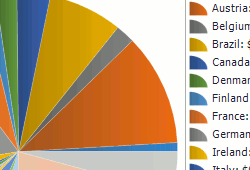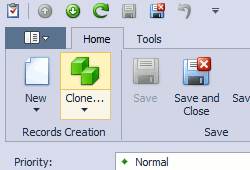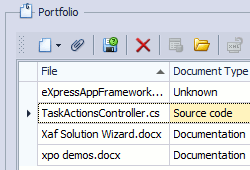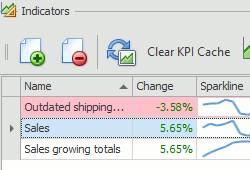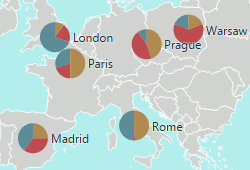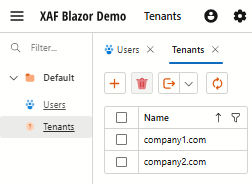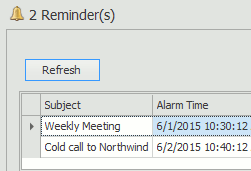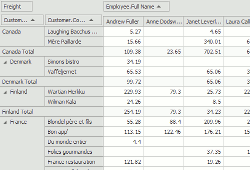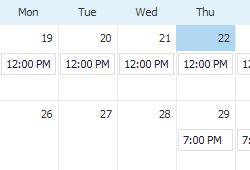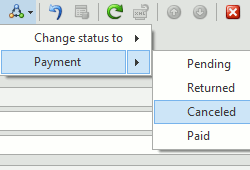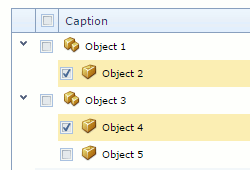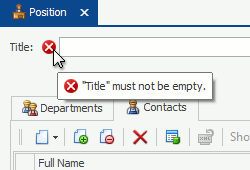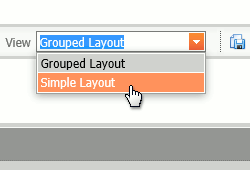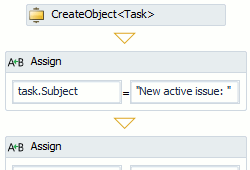Modules
- 7 minutes to read
An XAF module is a ready-to-use package for a feature. A module introduces additional Controllers, Actions, List Editors, View Items, Application Model nodes, and properties.
An XAF module is a class library that contains a class derived from ModuleBase. This class allows XAF to recognize a library as a module. XAF-specific classes in a module are automatically collected by reflection and used for UI generation. Controllers declared in a module are created in every Frame of an XAF application. They allow you to implement custom code that runs when the Controller is activated.
XAF supports the following module types:
- System Modules
- XAF applications include system modules. These modules supply basic application functionality, such as a Navigation System, Printing, and Export, and cannot be disabled.
- Built-in XAF Modules (listed below)
- XAF includes a number of ready-to-use modules that are listed and described below. For information about how to register a built-in module in your application, refer to the following help topic: Register a Built-in XAF Module.
- Custom XAF Modules
- You can implement a custom module for your solution. Such a module can be reused in other XAF applications. For more information, refer to the following topic: Create and Register a Custom XAF Module.
- Third-Party XAF Modules
- XAF supports work with third-party modules, such as Llamachant Framework Modules, Reactive.XAF Modules, and other XAF Community Extensions. They are usually registered similar to custom XAF modules (Create and Register a Custom XAF Module). Refer to the module vendor documentation for more details.
Audit Trail Module | |
| The Audit Trail module tracks changes to application data. It shows the object and the changes applied to that object by the user, and records old and new property values. The module logs each change when the system saves the object. Additional information: Audit Trail (History of Data Changes) Supported platforms: ASP.NET Core Blazor, Windows Forms, ASP.NET Web Forms. |
Business Class Library Customization Module | |
| This module allows you to customize UI settings, such as class images, List View columns, and Detail View layouts for built-in business objects from the Business Class Library. Additional information: Business Class Library Customization Module Supported platforms: ASP.NET Core Blazor, Windows Forms, ASP.NET Web Forms. |
Chart Module | |
| This module adds List Editors to visualize data with various 2D and 3D chart controls. The module integrates the Chart Designer into the Model Editor in WinForms and Web Forms projects. Additional information: Chart Module Supported platforms: ASP.NET Core Blazor, Windows Forms, ASP.NET Web Forms. |
Clone Object Module | |
| Allows end users to quickly create similar business objects by copying an existing object and changing property values. Additional information: Clone Object (Copy Data Records) Supported platforms: ASP.NET Core Blazor, Windows Forms, ASP.NET Web Forms. |
ConditionalAppearance | |
| This module allows you to change the user interface based on business rules. You can highlight editors, change their availability or visibility, and update font styles. You can also define or edit these rules at runtime without recompiling the application. Additional information: Conditional Appearance (Manage UI State) Supported platforms: ASP.NET Core Blazor, Windows Forms, ASP.NET Web Forms. |
Dashboards Module | |
| The Dashboards module integrates DevExpress Dashboard controls into XAF applications. Users can create dashboards at runtime and save them in the application database. Additional information: Dashboards Module Supported platforms: ASP.NET Core Blazor, Windows Forms, ASP.NET Web Forms. |
File Attachments Module | |
| This module displays properties of the file data type in the FileDataPropertyEditor and allows users to perform file management operations (upload, download, open, and save files). Additional information: File Attachments (Store Custom Files) Supported platforms: ASP.NET Core Blazor, Windows Forms, ASP.NET Web Forms. |
KPI Module | |
| The KPI module tracks Key Performance Indicators to measure business performance. KPI values can be shown in green, yellow, or red zones for easy reading. You can compare KPI values across different periods. If you need deeper analysis, you can see the objects behind each KPI. Additional information: KPI Module Supported platforms: Windows Forms, ASP.NET Web Forms. |
Maps Module | |
| This module adds List and Property Editors that display business objects on a map. Additional information: Maps Module Supported platforms: ASP.NET Core Blazor[1], Windows Forms[1], ASP.NET Web Forms. |
Multi-Tenancy (Data per Tenant) | |
| This module helps you build multi-tenant or SaaS-ready applications for CRUD use cases. Additional information: Multi-Tenancy (Data per Tenant) Supported platforms: ASP.NET Core Blazor, Windows Forms. |
Notifications Module | |
| The Notifications module displays reminders for scheduler appointments or custom business objects. The applicatin shows a pop-up alert at the scheduled time. Users can view, cancel, or delay these notifications. Additional information: Notifications (Remind about Tasks) Supported platforms: ASP.NET Core Blazor, Windows Forms, ASP.NET Web Forms. |
Office Module | |
| The Office module integrates the following DevExpress controls:
Additional information: Office Module (Rich Text Editor, Spreadsheet Editor, PDF Viewer) Supported platforms: ASP.NET Core Blazor, Windows Forms, ASP.NET Web Forms. |
Pivot Chart Module | |
| This module allows users to analyze data with pivot grid and chart controls. The app stores each user’s analysis configuration in the database. You can also set up Additional information: Pivot Chart Module Supported platforms: ASP.NET Core Blazor[1], Windows Forms, ASP.NET Web Forms. |
Pivot Grid Module | |
| This module adds List Editors for data analysis with pivot grid controls and integrates the PivotGrid Designer into the Model Editor. Additional information: Pivot Grid Module Supported platforms: ASP.NET Core Blazor[1], Windows Forms, ASP.NET Web Forms. |
Reports V2 Module | |
| This module integrates DevExpress Reporting into an XAF application. It provides a UI for designing, viewing, and printing reports. The app stores reports as business objects in the database. Additional information: Reports V2 Module Supported platforms: ASP.NET Core Blazor, Windows Forms, ASP.NET Web Forms. |
Scheduler Module | |
| This module adds List Editors that integrate scheduler controls in an XAF application. Schedulers implement various date-time views, multiple resources display, date navigator, and other features. Additional information: Scheduler (Manage Calendar Appointments) Supported platforms: ASP.NET Core Blazor, Windows Forms, ASP.NET Web Forms. |
Script Recorder Module | |
| This module includes a script recorder that records user actions on the UI and saves them to an EasyTest script file. Actions available in the Tools menu allow you to manage the recording process. Additional information: Script Recorder Module Supported platforms: Windows Forms, ASP.NET Web Forms. |
State Machine Module | |
| This module provides a UI to manage state transitions for business objects with different states. You can create states, define valid transitions, and link them to a business class. You can also set Conditional Appearance rules for each state. Additional information: State Machine (Organize State Transitions) Supported platforms: ASP.NET Core Blazor, Windows Forms, ASP.NET Web Forms. |
TreeList Editors Module | |
| This module adds List Editors that integrate TreeList controls and allows you to display data as a tree, a grid, or both. Additional information: Tree List Editors (Organize Hierarchical Data) Supported platforms: ASP.NET Core Blazor, Windows Forms, ASP.NET Web Forms. |
Validation Module | |
| This module lets you validate user input against business rules set in code at design time or at runtime. Additional information: Validation (Prevent Data Errors) Supported platforms: ASP.NET Core Blazor, Windows Forms, ASP.NET Web Forms. |
View Variants Module | |
| This module lets you store multiple View layout variants in the Application Model. Users can switch between layouts at runtime. Additional information: View Variants (Switch Document Layouts) Supported platforms: ASP.NET Core Blazor, Windows Forms, ASP.NET Web Forms. |
Workflow Module | |
| The Workflow module integrates Windows Workflow Foundation (WF) support into XAF. WF lets you build and manage workflow-enabled applications. Additional information: Workflow (Design & Run WF Activities) Supported platforms: Windows Forms, ASP.NET Web Forms. |
-
This feature requires custom solution with DevExpress UI components. You can find examples in our Outlook Inspired Demo. For more details, see Integrate Custom UI Components.
To get more ready-to-use modules, visit XAF Community Extensions.


